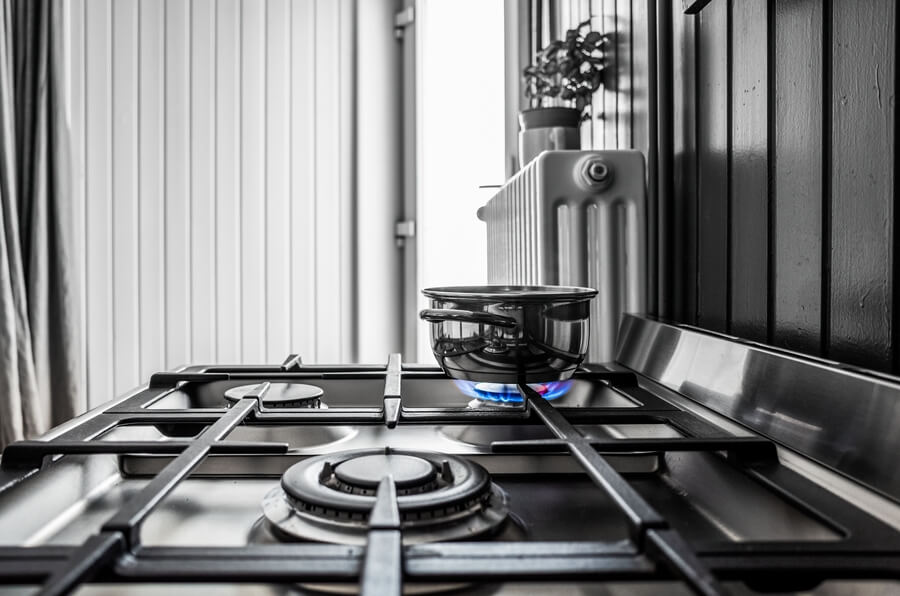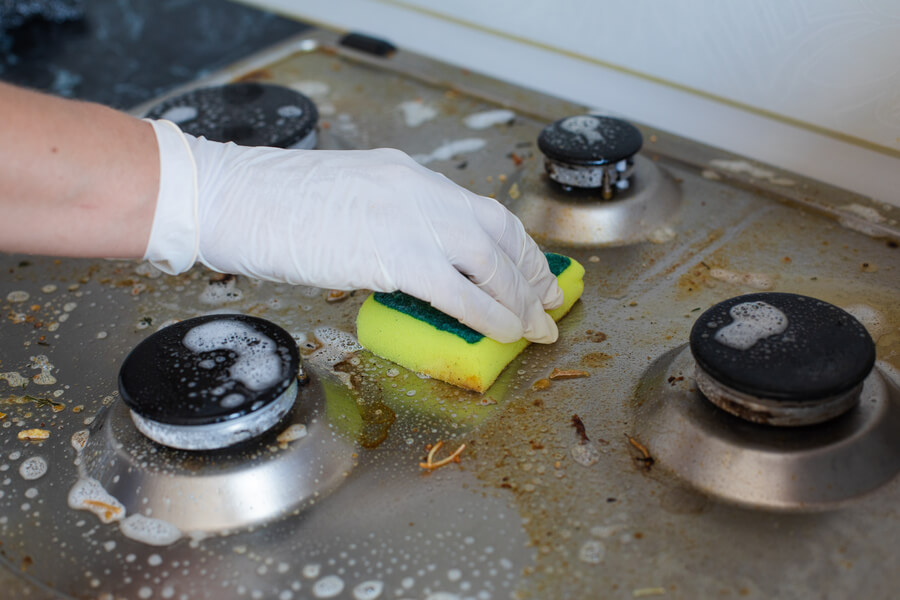Has your gas oven been acting strange lately? You may have noticed a persistent clicking or popping sound as it tries to light up, but the flame won’t stay on.

Don’t worry, you’re not alone. In this troubleshooting guide, we’ll tackle this issue step by step. So, let’s dive in and end that pesky clicking once and for all.
Gas Oven Sounds Like It Keeps Lighting | Reasons and Solutions
Fire and gas are a potent combination, and when you hear an unfamiliar sound emanating from your gas oven, it’s essential to take it seriously. The potential risks associated with gas are nothing to play around with.
Therefore, if your gas oven emits any unusual lighting sounds, your first action should be to turn it off immediately.
If you have experience fixing oven issues, tackling this problem might be a satisfying DIY project. However, if you need more clarification or are uncomfortable with the task, we strongly recommend seeking the expertise of a professional.

Your Igniter May be Dirty
The distinctive lighting sound your gas oven makes can vary depending on the underlying issue. At times, you might hear a pronounced “boom” inside the range, which could be attributed to a malfunctioning or dirty igniter. Over time, the greasy cooking environment can lead to grease and debris buildup on the igniter.
Igniters serve a critical role in the ignition process. They generate the necessary heat to ignite the gas, which keeps the flame going. However, if the igniter becomes clogged with grease and particles, it impedes ignition. As a result, gas may accumulate within the pipe, leading to intermittent “booming” sounds.
To resolve this issue, follow these steps:
- Remove the igniter from your oven.
- Gather a toothbrush and a piece of cloth.
- Carefully clean the igniter to remove the layer of grease and debris.
- Reinstall the igniter and test its functionality.
In some cases, if the grease buildup is particularly stubborn, cleaning the igniter requires more effort. Consider replacing the igniter with a compatible one for your oven model if needed.
Lack of Flow of Oxygen
If you experience the lighting sound when you initially turn on the gas in your oven, the primary culprit is often the igniter. However, what if you encounter this problem while your gas oven is already running? In such cases, the issue typically stems from inadequate oxygen flow within the range.
Understanding this problem is straightforward: fire requires a continuous supply of oxygen to burn, and the flame goes out when the oxygen is depleted. To rectify this issue, you must ensure a consistent oxygen flow into your gas oven.
Here’s what you can do:
- Locate the air shutter on your oven. This component allows air to mix with the gas for proper combustion.
- Adjust the air shutter to achieve the ideal flame, which should be blue and approximately half an inch tall. If the flame is smaller or larger than this, it indicates an issue with gas flow.
Fault in Gas Valve
Another potential cause of your gas oven producing lighting sounds could be a problem with the gas valve. If the burner releases excessive gas before ignition, it can result in a distinctive “lighting” noise.
Dealing with a malfunctioning gas valve is best left to the experts, as it involves complex components and potential gas leaks. Additionally, a loose valve that leaks gas is a severe issue that demands immediate attention from a professional technician.
Other Reasons for Gas Ovens Making a Lighting Sound
- Dirty or Clogged Burners: Burners can get clogged with debris over time, disrupting the gas flow.
- Faulty Igniter: The igniter’s job is to light the gas. If it’s not working correctly, the gas won’t ignite properly.
- Gas Supply Issues: Problems with the gas supply line or pressure can interfere with ignition.
- Thermostat Problems: If the thermostat is malfunctioning, it might not send the right signals to control the oven’s temperature.
Other Troubleshooting Steps
These DIY fixes should only be attempted if you have some technological know-how on how the gas oven works.
Step 1: Turn Off the Gas Supply
We’ve already done this for safety, but it’s crucial. Turn off your oven’s gas supply and wait a few minutes to ensure all gas has dissipated.
Step 2: Clean or Unclog the Burners
Sometimes, all your burners need is a little TLC. Please remove them and clean them gently with warm, soapy water. Ensure they’re scorched before re-assembling.

Step 3: Inspect and Replace the Igniter, if Needed
If the igniter isn’t doing its job, it’s time for a replacement. You’ll need to locate the igniter, remove it, and replace it with a new one. Make sure the new igniter is compatible with your oven model.
Step 4: Check for Gas Supply Issues
Inspect the gas supply line and connections for leaks, damage, or obstructions. If you find any issues, consult a professional plumber or gas technician for repairs.
Step 5: Examine and Test the Thermostat
The thermostat is crucial for maintaining the oven’s temperature. If it’s malfunctioning, it can affect the ignition process. Test the thermostat by setting your range to a specific temperature and using an oven thermometer to check if it matches.
Replacing Faulty Parts
If you’ve identified and confirmed a faulty component, like a burner or igniter, it’s crucial to replace it promptly. Here’s a quick guide:
Replacing Burners: If your burners are beyond repair, find compatible replacements online or at your local appliance store. Follow the manufacturer’s instructions for installation.
Replacing the Igniter: To replace the igniter, disconnect it from the gas and electrical connections, remove it, and install a new one. Always consult your oven’s manual for specific instructions.
Gas Supply Checks
While DIY troubleshooting can resolve some issues, gas supply issues require professional attention. Don’t hesitate to call a qualified technician if you suspect problems with your gas supply line or connections. Gas is something to play with if you’re trained for it.
Calling a Professional
If you’ve gone through the troubleshooting steps, and the issue persists or seems too complex, it’s time to call in the experts. Here’s what you should do:
- Know When to Seek Help: If you need clarification on any part of the troubleshooting process or if the problem persists, it’s best to call a professional technician.
- Finding a Qualified Technician: Look for certified appliance repair technicians. Read reviews and ask for recommendations if needed.
- Providing Information: When you contact a technician, be ready to describe the issue and any steps you’ve taken to troubleshoot.
Wrap Up
Congratulations! You’ve successfully figured out how to fix the issue of your gas oven sounding like it keeps lighting. Remember, safety and maintenance are the keys to a smoothly-running gas oven.
Keep enjoying cooking without the clicking sounds and have peace of mind knowing your appliance is in top-notch condition. Happy cooking, and stay safe.
